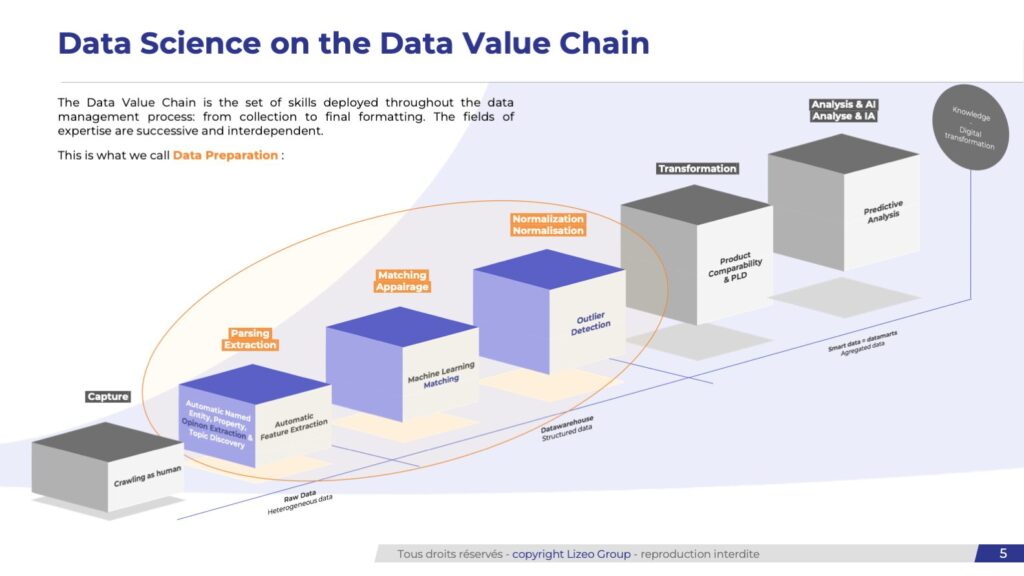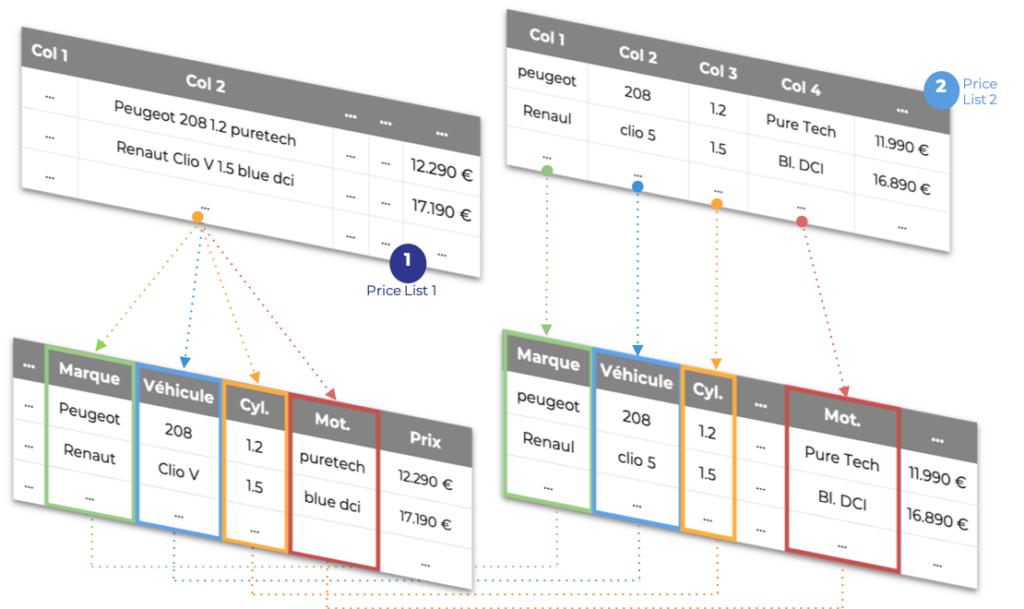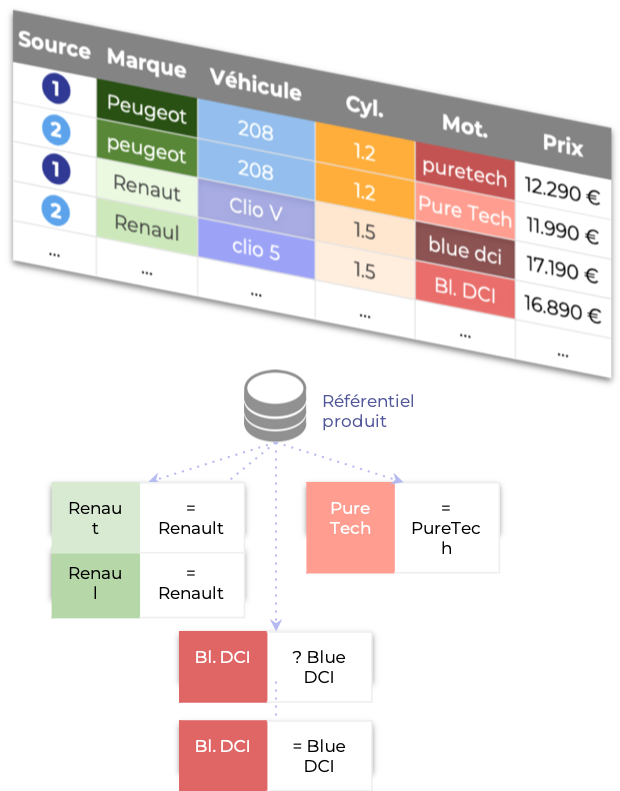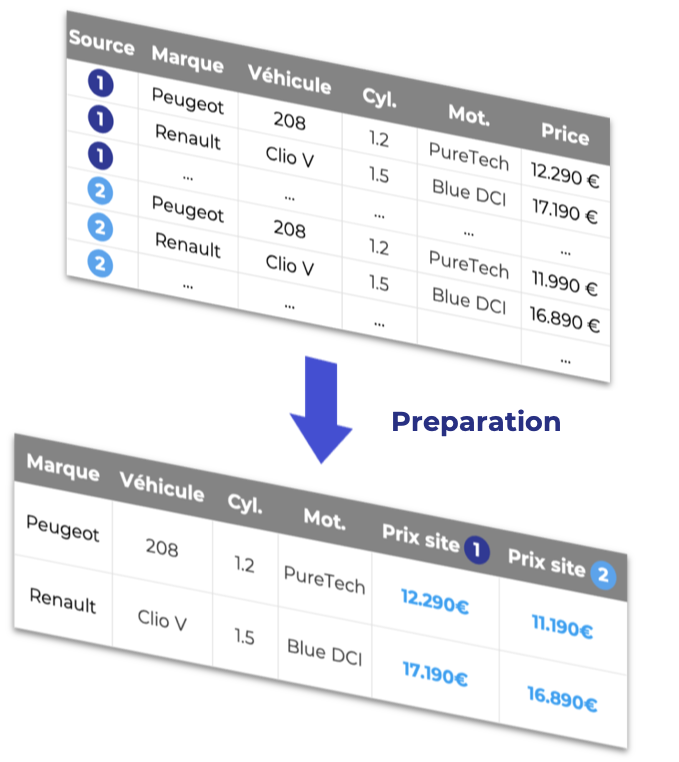
Elevate Your Business Decisions with Superior Data Quality
- Exploit and extract data value, Let data drive your business
- By Florence Paladino
In today’s data-driven economy, the quality of the information that businesses collect, analyse and use is crucial. High-quality data enables accurate decision-making, which in turn promotes growth and efficiency. In addition, reliable data flows minimise errors and redundancies, making it easier to comply with legal standards and reinforcing a company’s credibility and reliability in the eyes of its stakeholders.
Understanding Data Quality
Data quality refers to the condition of a set of values of qualitative or quantitative variables. It encompasses various dimensions, including accuracy, completeness, reliability, and relevance. Ensuring data quality means that the information is fit for its intended use in operations, decision-making, monitoring and planning.
Before taking steps to improve your Data Quality, you must first define what quality data means in your organisation and above all, what it will be used for :
- What are your use cases ?
- What business questions do you want to answer ?
- What information do you need to answer them ?
- What type of data do you need to use to access this information ?
When we consider Data Quality, we often think of cleaning data (deduplication, incomplete data enrichment, harmonisation, deletion of obsolete data). But be careful, this is only the top of the iceberg!
The upstream (definition of rules, audits, etc.) and downstream phases (sustainability and monitoring) are also essential to start a sustainable approach to create business value.
Data Quality is not an occasional process, it is a continuous endeavour, that you should automate as much as possible and complete with human expertise, to have complete, homogeneous, integrated, useful and up-to-date data at all times.
The work involved in Data Quality is a long process: you must have reliable data to make decisions and manage your strategy. To do this, it is essential to ensure the quality of your data at time “T”… and make sure the quality is maintained over time.
Implementing a Data Quality Process: A Five-Step Approach
To mitigate the risks associated with poor data quality, businesses should implement a structured data quality process. The following five steps provide a sustainable approach:
- Framework Establishment: Define what constitutes quality data within the organization. This involves setting clear criteria and standards that align with business objectives and regulatory requirements.
- Data Profiling: Assess the current state of data to identify anomalies, inconsistencies, and areas that require improvement. Profiling helps in understanding data patterns and detecting quality issues early.
- Data Cleaning and Enrichment: Address identified issues by correcting errors, removing duplicates, and filling in missing information. Data enrichment involves enhancing existing data with additional relevant information to improve its value.
- Sustainability through Data Governance: Implement data governance policies to maintain data quality over time. This includes defining roles and responsibilities, establishing data stewardship, and setting up procedures for ongoing data management.
- Monitoring and Continuous Improvement: Regularly monitor data quality metrics to ensure compliance with established standards. Continuous improvement involves updating processes and standards as business needs and data environments evolve.

Best Practices for Sustaining Data Quality
- Automation: Utilize automated tools for data validation, cleansing, and monitoring to reduce manual effort and increase accuracy.
- Employee Training: Educate staff on the importance of data quality and their role in maintaining it. Awareness and proper training can prevent many data quality issues from arising.
- Data Governance Framework: Establish a robust data governance framework that includes policies, procedures, and standards for data management. This framework should define data ownership, data quality metrics, and compliance requirements.
- Regular Audits: Conduct periodic audits to assess data quality and compliance with governance policies. Audits help in identifying gaps and areas for improvement.
In the modern industrial and commercial landscape, data quality is not merely a technical concern but a strategic imperative. Implementing a comprehensive data quality process ensures that businesses can make informed decisions, operate efficiently, comply with regulations, and satisfy customers. By following the outlined steps and best practices, organizations can establish a sustainable approach to data quality that delivers long-term value.
Use case - Used vehicles - Link prices from different sites to a single vehicle
STEP 1: Automated data cleansing and preparation
Integration of functionalities that automate all stages of the Data Management workflow, considerably reducing processing times to obtain ready-to-use qualitative data.

STEP 2: Standardisation
Merging and deduplication of data flows and repositories for comparability analyses and cross-referencing of data.

STEP 3: Results & delivery

© Lizeo Group 2025, all rights reserved
